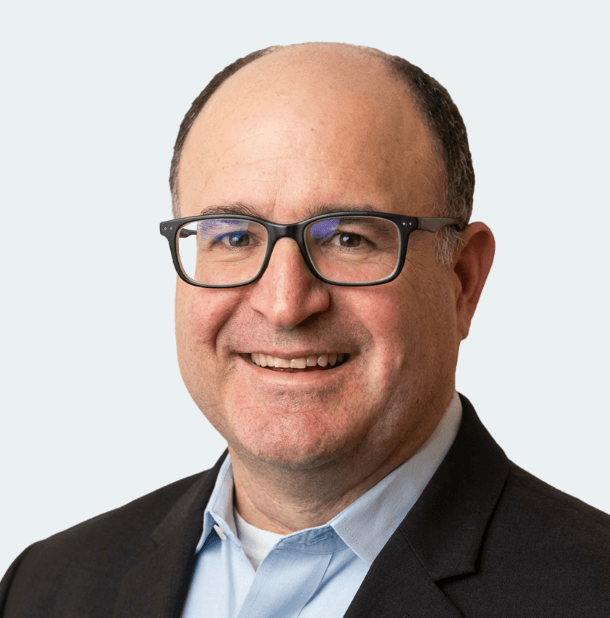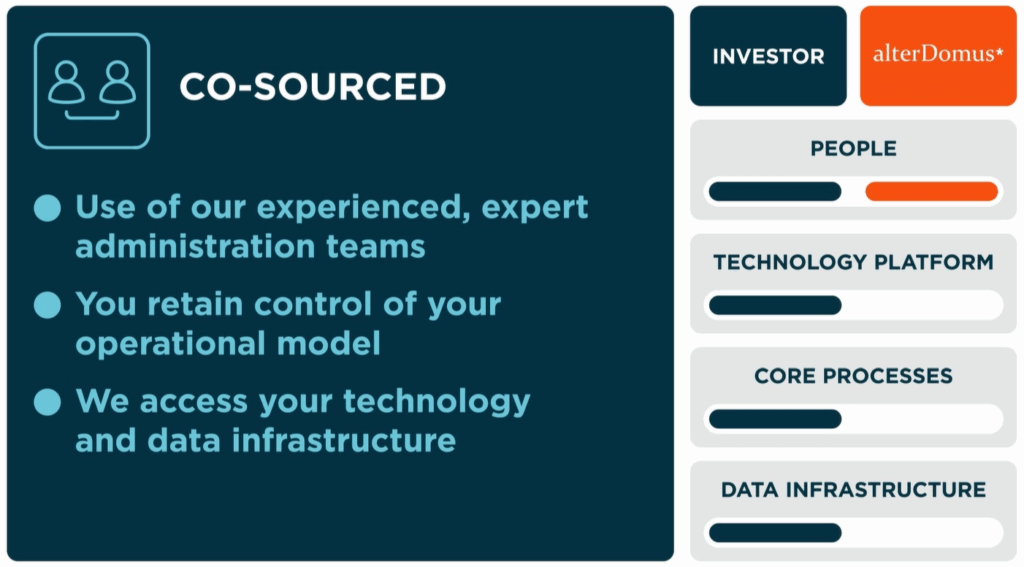Private Equity:
2025 Year in Review

Private equity highlights from 2025
- Private equity dealmakers endured a volatile year, as tariff changes put the brakes on an encouraging start to 2025.
- With hopes that 2025 would herald an M&A revival put on ice, pressure on GPs to clear portfolio backlogs and make realizations remained unrelenting.
- Continuation vehicle volumes continued to climb as managers made full use of the alternative exits routes available to them.
- Fundraising remained challenging, as LPs held off from backing new funds liquidity and program cash flows improved.
- Positive sentiment did begin to build in the second half of the year, with banner deals in Q3 2025 boosting year-on-year deal value comparisons.

Elliott Brown
Global Head of Private Equity
A Year Defined by Resetting Expectations
The private equity market entered 2025 with optimism that early signs of deal momentum, stabilizing valuations, and modest improvements in liquidity would translate into a sustained recovery. But as the year unfolded, shifting macro conditions, uneven policy signals, and persistent portfolio pressures forced managers to recalibrate those expectations. While pockets of activity strengthened − particularly in later quarters − the broader environment remained characterized by caution, selective dealmaking, and a continued focus on managing through legacy backlogs. This backdrop frames the dynamics that shaped GP sentiment and market behavior across the remainder of the year.
A Slower Than Expected Deal Recovery
GPs’ hopes that 2025 would finally be the year that private equity M&A activity rallied, never quite materialized, as shifts in US trade policy and volatile stock markets put the deal recovery on hold.
Despite the DOW reaching all time highs, the last 12 months have not been easy for private equity managers, who started 2025 with the expectation that flattening inflation and interest rate cuts in key markets would signal a turn in deal activity figures following a 36-month period of declining buyout transaction flows.
US tariff announcements in April, and the subsequent market dislocation, dashed any hopes of a deal revival in 2025, but in the final two quarters of the year, once dealmakers had assessed the impact of tariff shifts on earnings and portfolio companies, buyout activity did show signs of improvement.
Global buyout deal value for Q3 2025 hit US$377.34 billion, according to Dealogic figures analyzed by law firm White & Case – the best quarterly figures recorded since the market peak of 2021 and 59 percent above Q2 2025 totals. This lifted the buyout deal value for the first nine months of 2025 to US$911.04 billion, bringing it in line with full-year figures for 2024 and putting the buyout market on track to exceed US$1 trillion in annual deal value for the first time since 2022.
Landmark deals – most notably the $55 billion take-private of video game developer Electronic Arts in the biggest leveraged buyout in history – also pointed to an improving backdrop for buyout deals.
Crucially, momentum on the new buyout front was mirrored when it came to exits, with global exit value for the 9M 2025 coming in at US$468.02 billion – 84 percent up on the same period in 2024 and already ahead of the full-year exit value totals for 2023 and 2024.
After the initial tariff announcement shock, dealmakers gradually returned to business as the global economy rode out tariff disruption and interest rate cuts in the US, UK and Europe filtered through capital markets and brought down debt costs, facilitating more affordable deal financing.
Fundraising lagged deal rebound
The uptick in exit activity, while encouraging, was not large enough to put a meaningful dent in the backlog of unsold assets that had built up since 2022 and constrained the ability of managers to make distributions to their LPs.
According to PwC, the private equity industry still held an estimated US$1 trillion of unrealized assets halfway through 2025. Bain & Co.’s analysis, meanwhile, highlighted that while current exit volumes were broadly in line with 2019 levels, buyout managers were holding twice as many assets in their portfolios now as they were then.
With limited cash returns coming back to them, LPs had limited wiggle room to make commitments to new funds.
Fundraising through the first three quarters of 2025 fell to US$569.5 billion, according to PEI figures – the lowest fundraising total for a Q1-Q3 period in five years and around 22% down on the fundraising for the corresponding period in 2024.
GPs adapted to clogged exit channels by using alternative methods to unlock liquidity. At the beginning of 2025, Bain’s analysis showed that nearly one in every three portfolio companies in buyout portfolios (30%) had already undergone some form of liquidity event, ranging from minority stake sales and dividend recaps to NAV financings and continuation vehicle (CV) deals.
The continuation vehicle (CV) structure, in particular proved a popular option for expediting liquidity, with figures from Jefferies showing that CV deals accounted for almost a fifth (19%) of private equity exits through the first half of 2025.
The CV structure proved to be flexible through the course of the year, with GPs not only making us of single-asset CV liquidity at relatively attractive valuations (90% of single asset CVs priced above 90% of NAV, according to Jefferies) but also constructing multi-asset CVs to provide investors with much wider and deeper liquidity optionality.
The rise of non-institutional capital
The challenging fundraising market also served to strengthen the tailwinds behind the rise of private wealth investment into private equity.
The constraints in the institutional fundraising market obliged managers to broaden their investor base and innovate to unlock new pools of investors – most notably in the non-institutional space.
This drove a significant increase in the formation of evergreen fund structures (including interval funds and semi-liquid funds, among others), which were launched to facilitate more flows from private wealth into private equity strategies.
Analysis from HSBC Asset Management found that the net assets for the largest 16 private equity-focused evergreen funds registered with the US Securities and Exchange Commission (SEC) increased more than sixfold between 2021 and 2025, from US$10 billion to US$61 billion. The increase between 2024 and 2025 alone was 68%, reflecting the rapid growth of the non-institutional wealth channel through the year.
Retooling the private equity production line
For private equity managers, grasping the CV and private wealth opportunities not only necessitated a shift in investment and fundraising strategy, but also a significant operational overhaul.
As CVs and private wealth grew in 2025, managers encountered added layers of complexity in their operational model.
In the CV context, for example, asset pricing and reporting transparency, not to mention the capacity to support additional fund structures, demanded enhanced reporting and back-office capability. GPs also had to manage LP wariness of CV structures when they were in an incumbent investor position, particularly in multi-asset deals where portfolio companies included in the package were valued as a group rather than individually. Managers had to respond by producing granular pricing detail, as well as providing comprehensive reporting for the CV structures on their books.
GPs who dipped their toes into the non-institutional fundraising market, meanwhile, found that they had to ramp up their investor relations content output to reach a much broader, more disparate non-institutional investor base, often through distribution partners.
GPs also had to scale up back-office capability to service the preferred fund structures that non-institutional investors sought out when making allocations to private equity. New requirements included publishing monthly NAV figures and managing liquidity sleeves to ensure that vehicles could meet redemptions.
In addition, managers had to step up as LPs undertook detailed reviews of their fund exposures through the cycle of market dislocation – raising the bar on GP reporting.
From back office to front office, 2025 proved a challenging year for private equity firms − one that GPs nonetheless managed to navigate and adapt to.
Conclusion
Taken together, 2025 was a demanding but defining year for private equity. Managers contended with volatile markets, tighter operational and reporting requirements, and shifting investor dynamics, yet continued to broaden liquidity routes and refine their models to manage complexity. The year’s developments ultimately underscored the sector’s ability to adapt under sustained pressure.
Private Debt:
2025 Year in Review

Private Debt highlights from 2025
- Private debt posted good returns for investors and enjoyed strong fundraising support in 2025.
- Patchy M&A markets, however, limited deployment opportunities and increased competition for deals.
- Private debt managers reduced margins and eased lending terms in the race to win financing mandates.
- The formation of private credit continuation vehicles and private credit CLOs climbed in 2025, reflecting the asset class’s sophistication and maturity.

Jessica Mead
Global Head of Private Debt
A Year of Strength and Structural Change
Private debt delivered another strong year in 2025, buoyed by resilient performance, healthy investor demand, and the asset class continued appeal as a flexible source of capital. While macro volatility and tariff-related market dislocations influenced deployment conditions, private debt managers benefited from fundraising momentum and borrowers’ growing preference for speed, certainty, and tailored structuring.
At the same time, intensifying competition, evolving loan features, and new fund architectures signaled a sector continuing to mature and expand its role within private markets.
Performance, Fundraising, and Market Dynamics
Strong investor returns and steady fundraising support underpinned private debt’s solid performance in 2025. The asset class delivered exceptional risk-adjusted returns for LPs and continued its run of outperforming leveraged loan, high yield bond, and investment grade debt markets.
At a time when fundraising in other private-markets asset classes stalled and sputtered, fundraising for private debt in first nine months of 2025 reached US$252.7 billion – a record high for any Q1-Q3 period – as investors recognized private debt’s exceptional performance.
Competition Intensifies
Private debt’s unique selling points – speed and certainty of execution, no requirement for borrowers to obtain credit ratings, and flexible structuring – proved particularly relevant for borrowers in the first half of the year.
Tariff tumult saw public debt markets all but shutter in Q2 2025, with figures from White & Case and Debtwire recording a 16% fall in US and European syndicated loan and high yield bond issuance between the first and second quarters of 2025, opening the way for private debt players to fill the void.
Through the second half of the year, however, as the tariff fallout settled, syndicated loan markets reopened and rallied strongly to present stiff competition for private debt players in market still characterized by limited deal financing transaction flow.
According to Bloomberg, Wall Street banks had built up a pipeline of more than US$20 billion of M&A debt financing heading into the final quarter of 2025, winning mandates off private credit players by pricing debt at very low margins. Private credit players also faced pressure to defend existing loan books, as the low pricing offered by leveraged loan markets lured private credit borrowers with the opportunity to refinance debt at cheaper rates.
Private debt players had to respond by squeezing margins and upping leverage. Figures from Deloitte show that the margins on most private credit loan issuance dropped below five percent in 2025, while margins greater than six percent became a rarity. Leverage multiples increased during the same period, with around one in two new deals leveraged at more than 4x. There was a sharp spike in the volume of private credit deals levered at 5x or more.
Private debt funds also had to offer other bells and whistles to stand out from the crowd. Payment-in-kind (PIK) features, which allow borrowers to add interest payments to the principal balance of a loan rather than paying in cash, for example, became an increasingly common feature in private debt structures.
Research from investment bank Configure Partners showed that the inclusion of PIK features in terms when private debt loans were issued increased from 14.8 percent of loans in Q2 2025 to 22.2 percent in Q3 2025. The margins on these PIK facilities also compressed in 2025, as lenders narrowed pricing to win transactions.
Ratings agency Moody’s, meanwhile, noted that covenant-lite structures, historically only a feature of syndicated loan issuance, had become more common in the private credit space.
Dealing with Defaults
Private debt players also had to contend with growing concerns around default risk after the headline-grabbing defaults of auto-sector lender Tricolor and car parts supplier First Brands, where private credit lenders had exposure. Following the defaults, some industry executives expressed concerns that more hidden pockets of distress in private credit could emerge in the coming months, leading to potential losses for managers and investors.
Private credit was singled out for scrutiny following these defaults, even though BSL markets and banks carried exposure to the same borrowers, Indeed, private credit portfolios actually held up well in 2025, with KBRA DLD Default Research forecasting a direct lending default rate for 2025 of just 1.5 percent – lower than syndicated loan and high yield bond markets.
Nevertheless, covenant breaches did increase through the year, and even though breaches remained below longer-term averages, managers did have to invest more time and resources into managing portfolio credits in these situations.
A New Era of Operational Sophistication
In addition to building up their benches of workout and restructuring expertise, private debt players also had to upgrade their operating models as they followed private equity’s example and adopted new fund and distribution structures.
During the last year continuation vehicle (CV) structures became more prevalent in private credit, as private credit managers looked to extend hold periods for portfolio credits that hadn’t been able to exit to original timelines and required refinancings, term amendments and maturity extensions.
In workout situations extended hold periods were also required, although private credit funds also used CV deals to parcel up existing loan portfolios and sell to secondaries investors as a way to expedite payouts to existing investors.
The private credit market also saw an increase in the launch of private credit collateralized loan obligations (CLOs), which package up portfolios of private credit loans that are then securitized and sold off in tranches.
Bank of America forecast that the market was on track to deliver US$50 billion worth of private credit CLO formation by the end of 2025 – an all-time high. Executing private credit CLO deals required private debt managers to invest in additional accounting and legal expertise to manage the securitization process, structure special purpose vehicles to house portfolios, obtain ratings, and manage ongoing CLO administration.
Outsourcing partners stepped in to support private credit managers as they took on these higher back-office workloads and helped managers to focus on their core business of loan origination, underwriting and portfolio management in what proved to be an exciting but increasingly complex market.
Conclusion
Taken together, 2025 underscored private debt’s resilience and growing sophistication. Managers navigated a competitive environment marked by tighter margins, evolving borrower demands, and the increasing use of advanced fund and distribution structures.
Despite periods of market disruption, the asset class continued to attract capital and reinforce its role as a core component of private markets. As private credit strategies matured and operational expectations rose, the year demonstrated the sector’s ability to adapt, innovate, and maintain momentum in an increasingly complex landscape.
Real Estate:
2025 Year in Review

Real Estate Highlights from 2025
- Despite tariff dislocation and geopolitical uncertainty, 2025 was a year of recovery and relative stability for real estate on the equity side.
- Total real estate investment showed double-digit year-on-year gains in 2025, while real estate fundraising was set to beat 2024 totals.
- Lower interest rates in the US and Europe brought down financing costs and debt markets were open for business.
- The ongoing fall-out from the Chinese real estate crisis continued to linger and concerns about AI valuation bubble gave some cause for concern, but overall sentiment was positive the year drew to a close.

Maximilian Dambax
Global Head of Real Assets
Signs of Stabilization After Years of Volatility
Real estate entered 2025 on the back of prolonged macroeconomic and sector-specific pressures, including rising interest rates, weak bricks-and-mortar retail, and subdued office demand. Yet as the year progressed, falling financing costs, improving transaction activity, and pockets of resilience across logistics, data centers, and select regional markets signaled a broader reset.
While geopolitical uncertainty and tariff-driven volatility still weighed on sentiment, the asset class began to show clearer signs of stabilization compared with the disrupted post-pandemic period.
Market Recovery, Sector Divergence, and New Demands Drivers
After prolonged period of rising interest rates, declining bricks-and-mortar retail and falling office space demand post-pandemic, 2025 was a year of reset and recovery for real estate.
Despite market disruption in Q2 2025 following US tariff announcements, direct real estate investment activity rallied strongly in Q3 2025 to come in at US$213 billion for the quarter, boosting year-to-date transaction volumes by 21 percent on 2024 levels, according to JLL.
The STOXX Global 3000 Real Estate Index, meanwhile, was showing gains of close to 10 percent towards the end of 2025, as real estate real estate valuations stabilized following an extended run of market volatility and pricing uncertainty.
Steadier Outlook Support Fundraising
The improving backdrop for real estate investment was good news for private real estate fundraising, which fell to a five-year low in in 2024, but rallied through the course of 2025.
PERE figures showed real estate fundraising coming in at US$164.39 billion for the first nine months of 2025, a 24.1 percent year-on-year increase on the same period in 2024, and already close to matching the full year total of $167.39 billion for 2024. In another signal pointing to a fundraising recovery, the proportion of funds closing below target fell from 62 percent in 2024 to 49 percent through the first nine months of 2025.
Headwinds Still to Navigate
Annual fundraising for 2025, however, did not match the US$299.38 billion raised at the peak of the market in 2021, and global real estate assets under management remained on a downward slope, dropping to US$3.8 trillion according to the latest figures compiled by real estate industry associations ANREV, INREV, and NCREIF.
Green shoots did emerge, but the industry still had a way to go to claw back lost ground.
Real estate balance sheets were still stretched as a result of falling asset values and higher interest rates through the market downcycle. Refinancing debt remained challenging, and while lenders did afforded real estate borrowers breathing room by extending terms, a US$936 billion wall of commercial real estate debt is due to mature in 2026, according to S&P Global Market Intelligence, loomed over the industry
Real Estate investors also had to grapple with the ongoing fallout from the ongoing downturn in the Chinese real estate space, one of the biggest real estate markets in the world and a cornerstone of the Chinese economy, ran into its fourth year.
Despite various stimulus measures to support the Chinese market, real estate valuations didn’t improve, and large-scale developers have faced large losses and financial distress. The fallout rippled out, impacting other Asian property markets – and beyond.
Real estate investors also kept a close eye developments in the AI sector, the spur for investment in data center assets and one of the strongest real estate fundraising categories in 2025.
Three of the ten largest real estate funds that closed in 2025 – the US$7 billion Blue Owl Digital Infrastructure Fund III, the US$3.64 billion Principal Data Center Growth & Income Fund, and the US$11.7 billion DigitalBridge Partners III Fund – were raised to invest in data center assets, which accounted for just under a third (31 percent) of real estate fundraising in 2025, according to PERE.
Rising concerns around the risk of an AI valuation bubble, however, surfaced in the final quarter of the year, leading to share price volatility in stocks with AI exposure.
Technology share prices stabilized following strong earnings reports and positive revenue forecasts from key players in the AI ecosystem, but real estate managers did take pause to spend more time sense-checking data center and AI investment cases.
Upward Trajectory
For all the complexities and challenges that managers encountered in 2025, interest rate cuts by central banks in the US, UK and Europe were a much-welcomed macro-economic development, and brought down debt servicing costs for real estate assets. This helped real estate dealmakers to refinance debt and push out maturity walls, as well as facilitate a clearer picture on asset valuations.
Indeed, closer alignment on pricing was observed in 2025 and positively impacted the market, with analysis from Savills analysis showing an increase in average real estate transaction sizes in 2025. According to Savills there was a 14 percent increase in the number of individual properties trading for more than US$100 million, and a 17 percent uptick in the value of portfolio and entity level deals. Big cheque sizes suggest increasing confidence on the part of buyers.
Fundraising trends, meanwhile, also indicated that private real estate managers were finding assets at attractive entry valuations, and add value to properties sentiment improved.
Opportunistic real estate investment strategies, which present the highest return potential but require significant upfront redevelopment and construction investment in underperforming assets, accounted for 40 percent of the real estate capital raised across the first nine months of 2025, according to PERE. This highlighted the opportunity to invest in assets that had been passed over in recent years because of market volatility.
Real estate investors also began to feel the benefits a favorable supply-demand imbalance (particularly in segments such as office real estate) that became a feature of the market as new developments went on hold due to market uncertainty and elevate financing costs in prior years.
In the office segment, for example, new groundbreakings had fallen to a record low in the US and Europe, according to JLL, and most new property pipelines had been pre-leased. As a result, global office leasing climbed to it is best level since 2019. Global office vacancy rates dropped, and prime sites were at a premium, supporting leasing growth.
Other real estate categories also looking in good shape, albeit with some regional differences.
In logistics real estate, for example, leasing improved in North America and Europe in Q3 2025, although Asia markets were more cautious on the back of tariff and export uncertainty, although logistics presented opportunity for savvy buyers who were able adapt to changes in trade policy. Retail was another bright spot, with store openings outpacing store closures in the US, according to JLL, while in Europe and high growth Asian economies premium sites were in high demand with space limited.
Real estate has had rough ride through the last 36 months, but as interest rates come down and valuations recover, 2025 marked a year where the asset class finally has a chance to turn the corner.
Conclusion
Despite persistent challenges—from the ongoing fallout in China’s property sector to volatility in office markets—2025 marked a turning point for global real estate. Falling interest rates, firmer transaction activity, and renewed investor appetite helped stabilize valuations and support a gradual recovery in fundraising.
Strength in logistics, data centers, and select regional markets further underscored the sector’s adaptability in the face of macro and structural headwinds. While not all segments rebounded equally, the broad improvement across pricing, liquidity, and sentiment suggested that real estate finally began to regain its footing after several difficult years.
Infrastructure:
2025 Year in Review

Infrastructure Highlights from 2025
- Private infrastructure posted excellent fundraising numbers in 2025 as managers reaped the rewards for delivering solid returns.
- Investment cases benefitted from favorable long-term growth drivers, with digital infrastructure and power driving deal flow.
- Areas of complexity emerged in the renewables sub-sector, where the US and European markets diverged.
- Infrastructure secondaries and infrastructure debt provided infrastructure GPs and LPs with welcome pools of liquidity.

Maximilian Dambax
Global Head of Real Assets
Growth Anchored by Fundamentals
Infrastructure continued to demonstrate resilience in 2025, supported by strong fundraising momentum, robust long-term demand drivers, and solid underlying fundamentals across core and emerging sub-sectors.
While market volatility, policy shifts, and technology-led disruption influenced activity, investors remained focused on the asset class’s capacity to deliver stable returns and capital deployment opportunities. These dynamics shaped a year marked by both sustained growth and evolving complexity across the global infrastructure landscape.
Market Performance, Capital Flows, and Sector Dynamics
The positive long-term outlook for infrastructure investment growth and a good run of returns boosted private infrastructure fundraising in 2025.
By the end of Q3 2025 private infrastructure fundraising had already achieved a record annual high, as fundraising for the first nine months of 2025 reached US$200 billion – the first time the asset class had crested the US$200 billion mark ever, according to Infrastructure Investor data.
The share of private infrastructure funds closing on target, meanwhile, climbed more than three-fold, from nine percent in 2024 to 31 percent in 2025. Funds also took less time to reach a close, with average time on the road down by more than six months when compared to the previous year.
The strong 2025 fundraising numbers reflected private infrastructure’s consistent returns performance. Analysis of the MSCI Private Infrastructure Asset Index by commercial real estate services and investment business CBRE showed private infrastructure posting 11.5 percent rolling one-year total returns – outperforming listed infrastructure and global bonds over a three- and five-year investment horizon.
The industry’s returns performance was grounded in solid underlying fundamentals, with the requirement for investment in water and sanitation, electricity and power, and transport and logistics capacity increasing as global populations grow.
These fundamentals supported positive growth in global private infrastructure investment, with CBRE analysis of Infralogic data showing a 22% year-on-year gain through the first nine months of 2025, with investment reaching US$960 million for the period.
Shifting Ground
One of the single-most important drivers of infrastructure’s overall performance and deal flow in 2025 was the data center market, where huge investment in AI spurred robust demand for digital infrastructure.
McKinsey forecast in the summer that capital expenditure on data center infrastructure could reach as much US$1.7 trillion by 2030 – predominantly driven by AI expansion.
The positive momentum from the data center boom rippled out into other infrastructure sub-sectors, most notably power. Electricity consumptive data centers drove up power demand and pricing, with McKinsey models projecting that data power center would require1,400 terawatt-hours of power by 2030, representing four percent of total global power demand.
There were, however, some bumps in the road for the AI growth story during the year. In August a research report compiled by the Massachusetts Institute of Technology (MIT) found that 95 percent of organizations were deriving zero return from investments in AI, raising concerns of an AI bubble. Market anxiety around the sustainability of AI spending peaked again in November, leading to share price drops across the board for large technology companies.
Positive earnings from chipmaker Nvidia – a key bellwether for the sector – eased AI bubble concerns, but the year closed with infrastructure stakeholders taking a more measured approach on AI and data center growth projections.
Renewables Reset
Renewable energy was another infrastructure sub-sector that encountered volatility and complexity in 2025.
In July the US passed legislation to phase out tax credits for wind and solar projects by 2027, rather than the original 2032 deadline. This left developers facing truncated project timelines and under pressure to accelerate project developments, or risk losing tax credit benefits.
The phase out of tax credits followed an earlier executive order from the White House temporarily withdrawing offshore leasing for wind power, as well as the Securities and Exchange Commission (SEC) dropping its defense against state-led lawsuits challenging its climate-related disclosure rule.
The shifts in the US led to divergence from the European position, where the EU retained the key pillars of its environmental legal framework, including the Corporate Sustainability Reporting Directive (CSRD) and Corporate Sustainability Due Diligence Directive (CSDDD), although the EU did bring forward proposals to ease the compliance burden of these directives for small and medium-sized enterprises.
The European Central Bank (ECB), meanwhile, continued to integrate climate risk into its operations, and the European Investment Bank (EIB) signed off on €15 billion of green transition funding.
This left infrastructure managers with US and European LP bases and operations having to walk a fine line between the ESG and climate priorities of US and European regulators and investors.
Nevertheless, renewables still represented the single biggest category for infrastructure fundraising in 2025, with the US$20 billion raised for Brookfield’s Global Transition Fund II – which will focus on investment in the transition to clean energy – the third biggest infrastructure fund close in the first nine months of 2025. Brookfield cited an “any and all” approach to ramping up power capacity as a key driver of low carbon energy production, with clean energy an essential component to meet growing demand for power, not just from data centers, but also from the electrification of transport and industry.
Political instability may have shaken up the investment case for investment in decarbonization and renewable energy infrastructure, but investors continued to see long term value in the industry.
Sophisticated Structuring to the Fore
Infrastructure also saw momentum build in areas such as infrastructure secondaries and infrastructure debt, which injected additional liquidity and flexibility into the asset class.
According to private markets investment adviser Stafford Capital Partners infrastructure secondaries deal volume was on track to climb by around 50 percent in 2025 and reach approximately US$15 billion for LP-led deals, and between US$15 billion and US$20 billion for GP-led transactions.
The increase was spurred by a combination of the liquidity requirements of private markets programs and the use of secondaries markets to manage exposure to regulatory change and geopolitical uncertainty.
Infrastructure debt provided a similarly useful pool of liquidity to complement infrastructure M&A and project development, as well as offering investors an opportunity to diversify their fixed income portfolios and lock in consistent yields uncorrelated to public markets.
Infrastructure debt assets under management (AUM) grew at a compound annual growth rate (CAGR) of 23.1 percent, according to Institutional Investor, and positioned infrastructure debt as an increasingly sizeable and influential constituent of the infrastructure funding mix.
The growth of these adjacent pools of capital in the infrastructure ecosystem provided valuable support to infrastructure dealmakers, who sought out partners to provide liquidity and share risk.
Conclusion
Overall, 2025 reinforced infrastructure’s position as a resilient and strategically important private markets asset class. Strong fundraising, dependable performance, and accelerating demand in areas such as digital infrastructure supported continued growth, even as policy shifts and renewables volatility added layers of complexity for managers and investors.
The expanding role of infrastructure debt and secondaries, combined with divergent regulatory developments across the US and Europe, further shaped capital flows and operating conditions. Despite these challenges, long-term fundamentals remained intact, underscoring infrastructure’s ability to adapt and attract capital in a rapidly evolving environment.












